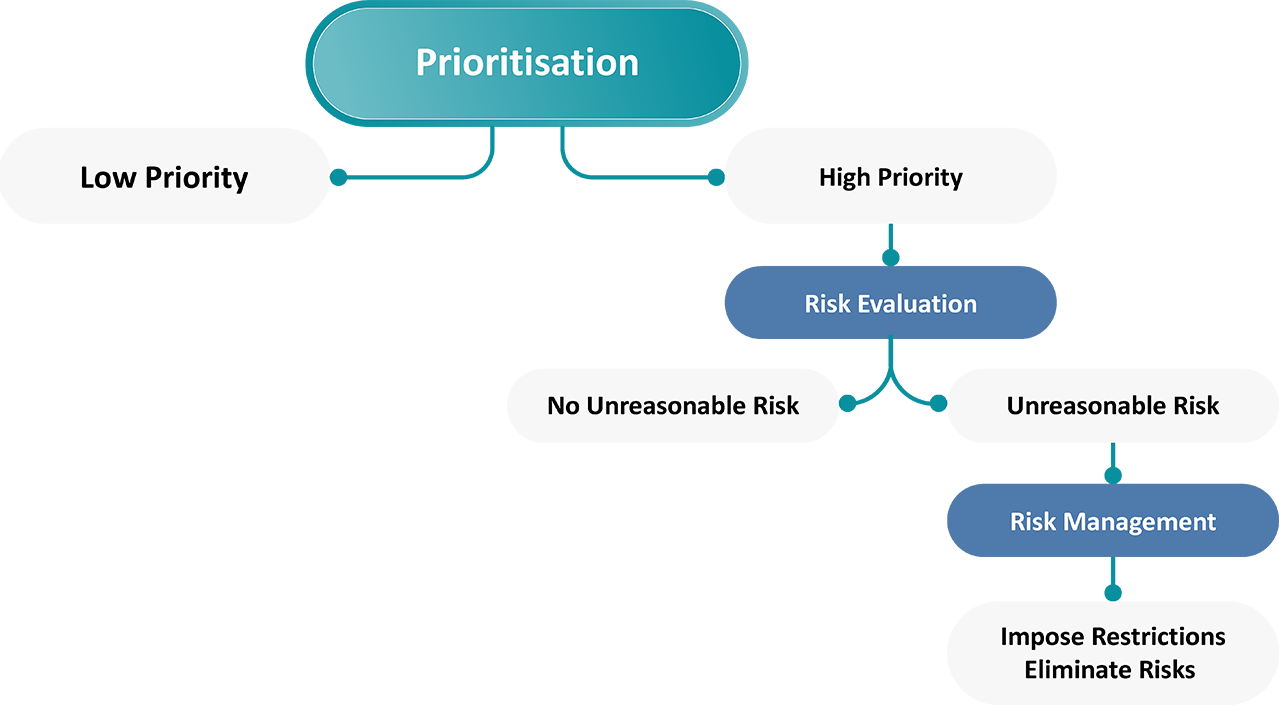
Amended by the Frank R. Lautenberg Chemical Safety for the 21st Century Act, Toxic Substances Control Act (TSCA) requires the United States Environmental Protection Agency (EPA) to evaluate the safety of existing chemicals. How can manufacturers evaluate safety? Here is a stage-wise approach that EPA follows for the chemical risk evaluation process:
- Prioritization
- Risk evaluation
- Risk management
The following graphic provides an overview of the stages for chemical safety:

Prioritization
Prioritization is the first step in EPA’s process for evaluating the safety of existing chemicals. It is a risk-based screening process for assigning chemical substances as either high-priority substances or low-priority substances. TSCA requires the EPA to give certain preferences such as hazard exposure, persistence and bioaccumulation to prioritize chemicals on the 2014 TSCA Work Plan. If high-priority substances are found, then the EPA will initiate a TSCA risk evaluation of the substance.
Low-priority substances are taken out of scope for further assessment at this time. It provides public notice on the hazard and/or exposure potential of the chemical substance that is anticipated to be low or non-existent. It also provides insight into chemical substances that do not need additional evaluation and risk management.
Risk Evaluation
Risk evaluation is the second step in the EPA’s process for evaluating the safety of existing chemicals. If the EPA designates a chemical as a high-priority substance, the chemical moves immediately to the risk evaluation phase. In this phase, EPA determines whether or not the chemical presents an unreasonable risk to human health or the environment. TSCA prohibits the EPA from considering non-risk factors (such as costs, benefits) during risk evaluation. This includes risks to subpopulations such as children and workers, who may be at greater risks than the general population. The risk evaluation process has the following components:
- a scope document with information on the risk evaluation
- hazard and exposure assessments and risk characterization
- a risk determination affirming whether or not a chemical substance presents an unreasonable risk to health or the environment
Risk Management
Risk management is the third step in EPA’s existing chemicals process. If the EPA determines the chemical presence is at unreasonable risk to health or the environment, the chemical will be immediately moved to the risk management action. During this process, the EPA has numerous options for Regulatory restrictions to reduce risk, which include requirements regarding the use of chemicals in the products, labeling requirements, use restrictions, phase-outs or bans on the use of the chemical in products.
Hence, companies, who wish to manufacture or market their chemical-based products in the US, must follow the risk assessment process carefully. To achieve cost-effective compliance, it is advisable to consult a regional Regulatory partner for Chemicals. Stay informed. Stay compliant.









